Paul Rand and his twin brother, Philip, were born on August 15, 1914, in Brooklyn, New York. The New York, New York Birth Index, at Ancestry.com, did not record their first names.
Their parents were Isidor Rosenbaum, a pearl buttons jobber, and Lena Hecht, who, according to the 1910 U.S. Federal Census, were Austrian emigrants. They married around 1909 and had a five-month-old daughter, Ruth. The trio lived with Lena’s parents, Herman and Yetta Hecht, and their four daughters in Brooklyn at 338 Hopkinson Avenue (later renamed Thomas S. Boyland Street).
In the 1915 New York state census, the Rosenbaum family of five, lived in Brooklyn at the same address. Rand’s first name was recorded as Paulie and he was mislabeled as a daughter.
The 1920 census (below) said the Rosenbaums resided at 1549 St. Marks Avenue in Brooklyn. Rand’s father was a cutter in the clothing trade. The address was unchanged in the 1925 New York state census.
The Brooklyn Daily Eagle, June 25, 1929, listed the graduates of Junior High School P.S. 109. Rand was in class 9B4. In Print magazine, May/June 1997, Steve Heller said Rand “painted signs at P.S. 109 for school events”.
According to the 1930 census, Rand, his brother and parents were Brooklyn residents at 284 Snediker Avenue. Rand’s father was a salesman at a grocery store.
Heller said Rand continued his education at Haaren High School in Manhattan during the day, and Pratt Institute in the evening. Rand supplemented his education at the New York Public Library where he immersed himself in art books and European and British magazines. Rand studied drawing with Georg Groz at the Art Students League.
Brooklyn Daily Eagle, July 1, 1932. Rand is in the top row, second from the left.
Heller said Rand opened a studio, in 1935, on East 38th Street in Manhattan. Rand started work at the Esquire-Coronet publishing company in 1936. It was located at 366 Madison Avenue. One of the partners was William Weintraub.
Rand’s Social Security application was transcribed at Ancestry.com. Under the name Paul Rosenbaum, he applied for a Social Security number in November 1936. In 1937 he changed his surname.
The New York, New York Marriage License Index, at Ancestry.com, said Rand and Harriet Wallace obtained a license on October 2, 1937. The New York, New York Extracted Marriage Index said they married on October 10, 1937 in Brooklyn.
The 1940 census said Rand and his wife lived in Manhattan at 44 East 50th Street. His occupation was artist at a publishing house. Rand’s parents and brother remained in Brooklyn. In International Design Magazine, September-October 1993, Janet Abrams profiled Rand who said his brother became a professional jazz musician playing the sax and clarinet. He died in an accident.
Six months after the census enumeration, Rand signed his World War II draft card on October 16. His description was five feet seven inches, 142 pounds, with brown eyes and hair. His employer was William Weintraub.
Heller said Weintraub left Esquire-Coronet in 1941 and started an advertising agency. Rand was its art director.
Paul Rand: His Work from 1946 to 1958 said Rand apprenticed at George Switzer Studios from 1932 to 1934, and was art director at Esquire and Apparel Arts from 1936 to 1941. Something About the Author, Volume 6, said Rand was at Switzer from 1932 to 1935. In Communications Arts, January/February 1979, Allen Hurlburt dated Rand’s career in three parts: 1937 to 1941 for media promotion and cover designs; 1941 to 1954 for advertising; and beginning in 1954 for corporate identity graphics.
Rand was listed in the 1954 Westport, Saugatuck, Green Farms, Weston, Wilton Connecticut city directory. He lived on Good Hill Road.
In 1946, Rand’s marriage ended in divorce. His second marriage was to Anne Elizabeth Binkley. They obtained a marriage license on March 28, 1949. The couple collaborated on four books: I Know a Lot of Things, Sparkle and Spin, Little 1, and Listen! Listen! Their daughter, Catherine, was born in 1954. Some time later, they divorced. Anne married Hasan Ozbekkan in 1960. Rand married Marion S. Hall in 1975.
Rand passed away on November 26, 1996, in Norwalk, Connecticut. He was laid to rest at Temple Beth El Memorial Park. The New York Times published an obituary. Rand’s second wife, Anne Ozbekhan, passed away on May 6, 2012, in Philadelphia. Rand’s third wife, Marion Swannie, passed away on December 29, 2017, in Weston.
Selected Books and Articles by Paul Rand
Goodman and Thiese, 1944
First Edition
Paul Rand
Wittenborn & Company, 1947
Second Edition
Paul Rand
Wittenborn & Company, 1951
Ann Rand & Paul Rand
Harcourt Brace, 1956
Ann Rand & Paul Rand
Harcourt Brace, 1957
Wittenborn, 1960
Ann & Paul Rand
Harcourt Brace, 1962
Education of Vision
Gyorgy Kepes
G. Braziller, 1965
pages 156–173: Design and the Play Instinct
Ann Rand & Paul Rand
Harcourt Brace, 1970
Third Edition
Paul Rand
Studio Vista Van Nostrand Reinhold, 1970
1984
A Paul Rand Miscellany
Paul Rand
Yale University Press, 1985
Paul Rand
Yale University Press, 1987
September 10, 1989
Paul Rand’s review of An Essay on Typography by Eric Gill
May 2, 1993
Failure by Design
Paul Rand
Yale University Press, 1993
Paul Rand
Yale University Press, 1996
1991
Paul Rand
Yale University Press, 1996
Fourth Edition
Paul Rand
Chronicle Books, 2014
Paul Rand
Princeton Architectural Press, 2016
Selected Books and Articles About Paul Rand
Language of Vision
George Kepes
Paul Theobald, 1947
page 71: Direction cover
page 82: poster
page 99: liquor advertisement
page 112: cover design
page 118: advertisement
page 172: Direction cover
page 193: advertisement
page 199: advertisement
page 224: Apparel Arts cover
The Art of the Book: Some Record of Work Carried Out in Europe and the U. S. A. 1939–1950
Edited by Charles Ede
Studio Publications, 1951
pages 94–95: Arp: On My Way
page 166: The Tables of the Law
Paul Theobald, 1952
Jacket design by Morton Goldsholl
pages 60–76: Chapter IV: Paul Rand
Unused cover probably for this book
Typographic Directions: Advertising Directions 4 (Trends in Visual Advertising)
Edward M. Gottschall, Editor
Herb Lubalin, Designer
Art Directions Book Company, 1964
pages 10, 11, 16, 17, 34, 35, 37 (short paragraph about Rand’s work), 41 and 47
AD 1: The International Survey of Advertisements
Edited by Kurt Weidemann
Fredrick A. Praeger, 1966
unpaginated
items 125–129: Westinghouse
Typomundus 20
Reinhold Publishing Company, 1966
unpaginated
items 52, 76, 102
Word and Image: Posters from the Collection of The Museum of Modern Art
The Museum of Modern Art, 1968
page 103: Interfaith Day
Print
May/June 1972
Something About the Author, Volume 6
Anne Commire
Gale Research, 1974
pages 188–189: Paul Rand
January/February 1979
Article by Allen Hurlburt
The 20th Century Book: Its Illustration and Design
John Lewis
Van Nostrand Reinhold Company, 1984
page 71: The New Vision and Abstract of an Artist
page 225: Sparkle and Spin
Gutenberg & Family
October 1985
Preview of A Designer’s Art
A 24-Page Book
John Luke & the Type Directors Club, 1987
Cover and Page 8 by Paul Rand
I.D. Magazine
November/December 1988
Article by Steve Heller
Walker Art Center, Harry N. Abrams, 1989
Paul Rand mentioned on numerous pages; interview on pages 192–195
Creation: International Graphic Design, Art & Illustration
Number 1, 1989
Graphis Typography 1
Edited by B. Martin Pedersen
Graphic Press Corp., 1994
Pages 174–179, 249
Paul Rand
Steven Heller
Phaidon Press, 1999
Icons of Design
Weyerhaeuser Company, 2002
In order of appearance: Paul Rand (cover), Bradbury Thompson, Saul Bass, Milton Glaser, Herb Lubalin, Paul Rand, Woody Pirtle, Seymour Chwast, Paula Scher, Thomas Geismar, Steve Tolleson, Michael Vanderbyl, Michael Mabry, Fred Woodward, Stefan Sagmeister, April Greiman, David Carson
Franc Nunoo-Quarcoo, Editor
Fine Arts Gallery, University of Maryland, 2003
January 21, 2010
The Ford Logo That Almost Was
Philip B. Meggs, Alston W. Purvis
Wiley, 2016
Paul Rand mentioned several times
Further Reading and Viewing
Internet Archive, Some samples of Paul Rand’s, Next Identity
Letterform Archive, This Just In: Paul Rand
Wired, Paul Rand, the Visionary Who Showed Us That Design Matters
Westinghouse Electric Corporation Annual Report 1976
Interview, Cooper Union, April 7, 1991
1994 The American Institute of Graphic Arts
Membership and Resource Directory
A Paul Rand Retrospective
Designer, Illustrator, Educator, Author
Cooper Union, October 4–November 8, 1996
A Conversation: Paul Rand, Milton Glaser
American Institute of Graphic Arts, May 7, 1996
A Memorial
Cooper Union, December 16, 1996
Related Posts
(Next post on Monday: Valerie Barclay, Artist)



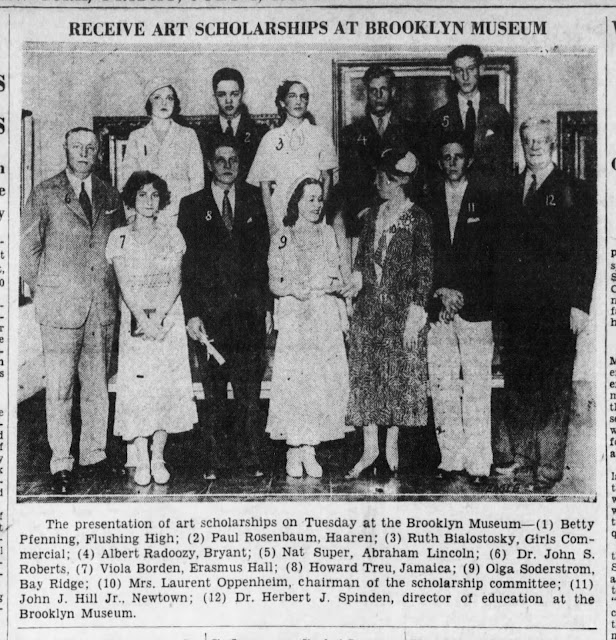






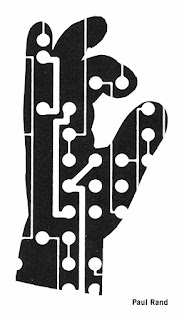

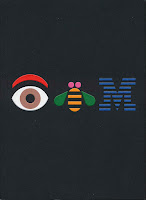








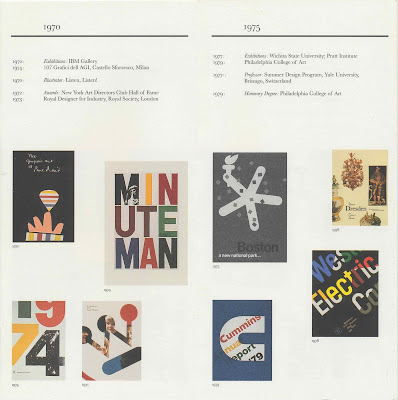


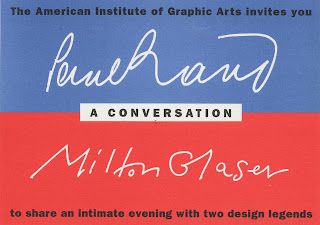

No comments:
Post a Comment